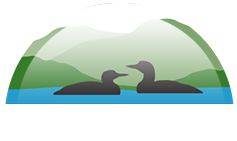At NH Audubon, we care about the Arctic National Wildlife Refuge. Plans to expand oil exploration and drilling on this protected expanse of public lands threaten one of the last examples of a large intact, functioning ecosystem that still supports vast numbers of migrating birds and mammals.
The tax bill recently passed by the U.S. Senate includes a provision authorizing the sale of oil and gas leases in sensitive areas of the Refuge. Roads, pipelines, and power lines add to the acreage that would be lost if drilling development is approved. This is an issue about public lands that belong to all Americans.

LINK to NH Senate and Congress with contact information
The core of the Arctic National Wildlife Refuge dates back to the Eisenhower Administration, when Fred A. Seaton, then Secretary of Interior, established the 8.9 million acre Arctic National Wildlife Range in Public Land order 2214 on December 6, 1960.
The Alaska National Interest Lands Conservation Act of 1980 re-designated the Range as part of the 19.6 million acre Arctic National Wildlife Refuge. This act also established the four purposes of the Refuge: to conserve animals and plants in their natural diversity, ensure a place for hunting and gathering activities, protect water quality and quantity, and fulfill international wildlife treaty obligations.
The Refuge includes the north and south slopes of the Brooks Range, which rises to elevations exceeding 8,500 ft., and a narrow coastal plain which extends 15-40 miles between the foothills and the Beaufort Sea. It is in this narrow strip of tundra, braided streams, and small lakes where oil exploration is being proposed. This narrow coastal lowland provides an important calving area for caribou and Alaska’s largest onshore denning area for polar bears. Common breeding birds include Cackling Goose, Pacific Loon, Tundra Swan, Semipalmated and American Golden plovers, Red-necked Phalarope, and Pectoral, Semipalmated and Upland sandpipers. As John Schoen, wildlife biologist, retired from Alaska Department of Fish and Game and Audubon Alaska, has pointed out, “If you overlay that narrow band of land with oil development, infrastructure of airfields and gravel roads and pipelines and pump stations, there really isn’t any place for the animals to go.”
To learn more about the Arctic National Wildlife Refuge, visit the U.S. Fish & Wildlife website: https://www.fws.gov/refuge/arctic/
To read excerpts from National Audubon* interviews with scientists who have spoken out against gas and oil development in the Refuge (including statements from Jeff Fair, who moved to Alaska after serving as Director of the Loon Preservation Committee from 1981 to 1991), visit http://www.audubon.org/news/in-their-words-scientists-why-arctic-refuge-must-remain-wild.
*Note that NH Audubon is an independent organization, and not affiliated with National Audubon.
- ConservationOur work falls into several broad catergories:Bald EaglePeregrine FalconNorthern HarrierCommon NighthawkSwallows, Martins and SwiftsWhip-poor-willsGrassland BirdsRusty Blackbird ResearchAmerican PipitsCoastal ShorebirdsThe State of the BirdsMotusDragonflies and DamselfliesPollinatorsPollinator Habitat RestorationPhenological Monitoring ProjectRaptor MigrationBowman Wildlife Crossing Project
- EducationAudubon From Home
- Policy
- Lands
- Centers and EventsCentersEvents
- About Us
